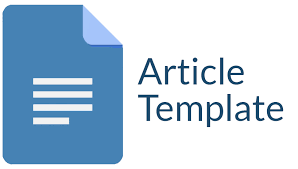INOVASI PELAYANAN PAJAK DAERAH MELALUI APLIKASI SISTEM INFORMASI DAN PELAYANAN PAJAK DAERAH TERPADU BERBASIS NIK (SIPANDAUNIK) DI KABUPATEN PONOROGO
DOI:
https://doi.org/10.26740/publika.v10n3.p739-752Keywords:
Service Innovation, Public Service, Local Tax, Sipandaunik ApplicationAbstract
Permasalahan pelayanan pajak daerah membuat Badan Pendapatan Pengelolaan Keuangan dan Aset Daerah Kabupaten Ponorogo meluncurkan inovasi e-government, yaitu aplikasi Sipandaunik dengan tujuan untuk meningkatkan pelayanan pajak daerah menjadi lebih efektif dan efisien. Tujuan dari penelitian ini untuk mendeskripsikan inovasi pelayanan pajak daerah melalui aplikasi Sipandaunik dalam meningkatkan pelayanan pajak daerah di Kabupaten Ponorogo. Penelitian ini menggunakan jenis penelitian deskriptif dengan pendekatan kualitatif. Teknik pengumpulan data melalui wawancara, observasi dan dokumentasi. Teknik analisis data yang digunakan meliputi pengumpulan data, reduksi data, penyajian data dan penarikan kesimpulan. Fokus penelitian didasarkan pada faktor sukses inovasi e-government oleh Kalvet (2012) yang meliputi leadership and public sector competencies, adequate funding, legislative and regulatory support, development of (strategic) information technology infrastructure, public-private partnerships, dan private sector competencies. Hasil penelitian menunjukkan bahwa inovasi pelayanan pajak daerah melalui aplikasi Sipandaunik sukses meningkatkan pelayanan pajak daerah menjadi lebih efektif dan efisien. Adapun detail dari suksesi inovasi layanan tersebut adalah sebagai berikut: 1) Leadership and Public Sector Competencies, pemimpin melaksanakan tugas dan tanggungjawab dengan baik dalam penerapan aplikasi Sipandaunik serta para pegawai yang kompeten dalam mengelola aplikasi. 2) Adequate Funding, penerapan aplikasi Sipandaunik menggunakan dana APBD dan selama penerapan belum pernah mengalami kendala pada dana. 3) Legislative and Regulatory Support, peraturan yang mengatur aplikasi Sipandaunik, yaitu Perbup Ponorogo Nomor 106 Tahun 2019 dan sudah ada SOP secara tertulis. 4) Development of (strategic) Information Technology Infrastructure, dalam pengembangannya aplikasi menggunakan perangkat keras dan perangkat lunak serta menjamin keamanan data dari wajib pajak. 5) Public-Private Partnerships, tidak terdapat kemitraan dengan sektor publik maupun swasta. 6) Private Sector Competencies, PT Javayoga berkompeten dalam membuat aplikasi Sipandaunik.
Kata Kunci: Inovasi Pelayanan, Pelayanan Publik, Pajak Daerah, Aplikasi Sipandaunik
Problems regarding local tax services has made the Ponorogo Regency Regional Financial and Asset Management Revenue Agency launch e-government innovation, namely the Sipandaunik application with the aim of improving local tax services to be more effective and efficient. The purpose of this study is to describe the innovation of local tax services through the Sipandaunik application in improving local tax services in Ponorogo Regency. This study uses a descriptive type of research with a qualitative approach. Data collection techniques were carried out through interviews, observation and documentation. Data analysis techniques according to Miles and Huberman which include data collection, data reduction, data presentation and drawing conclusions. The focus of this research is based on the success factors of e-government innovation by Kalvet (2012) which include leadership and public sector competencies, adequate funding, legislative and regulatory support, development of (strategic) information technology infrastructure, public-private partnerships, dan private sector competencies. The results of the study indicate that the innovation of local tax services through the Sipandaunik application has succeeded in increasing local tax services to be more effective and efficient. The details of the succession of service innovations are as follows: 1) Leadership and Public Sector Competencies, leaders carry out their duties and responsibilities well in implementing the Sipandaunik application and employees who are competent in managing applications. 2) Adequate Funding, the implementation of the Sipandaunik application uses APBD funds and during its application there has never been a problem with funds. 3) Legislative and Regulatory Support, regulations governing the Sipandaunik application, namely Perbup Ponorogo Number 106 of 2019 and there is already a written SOP. 4) Development of (strategic) Information Technology Infrastructure, in developing applications using hardware and software and ensuring data security from taxpayers. 5) Public-Private Partnerships, there are no partnerships with the public or private sectors. 6) Private Sector Competencies, PT Javayoga is competent in making Sipandaunik applications.
Keywords: Service Innovation, Public Service, Local Tax, Sipandaunik Application
Downloads
 Abstract views: 1121
,
Abstract views: 1121
, PDF Downloads: 1249
PDF Downloads: 1249





